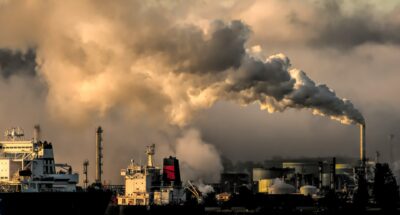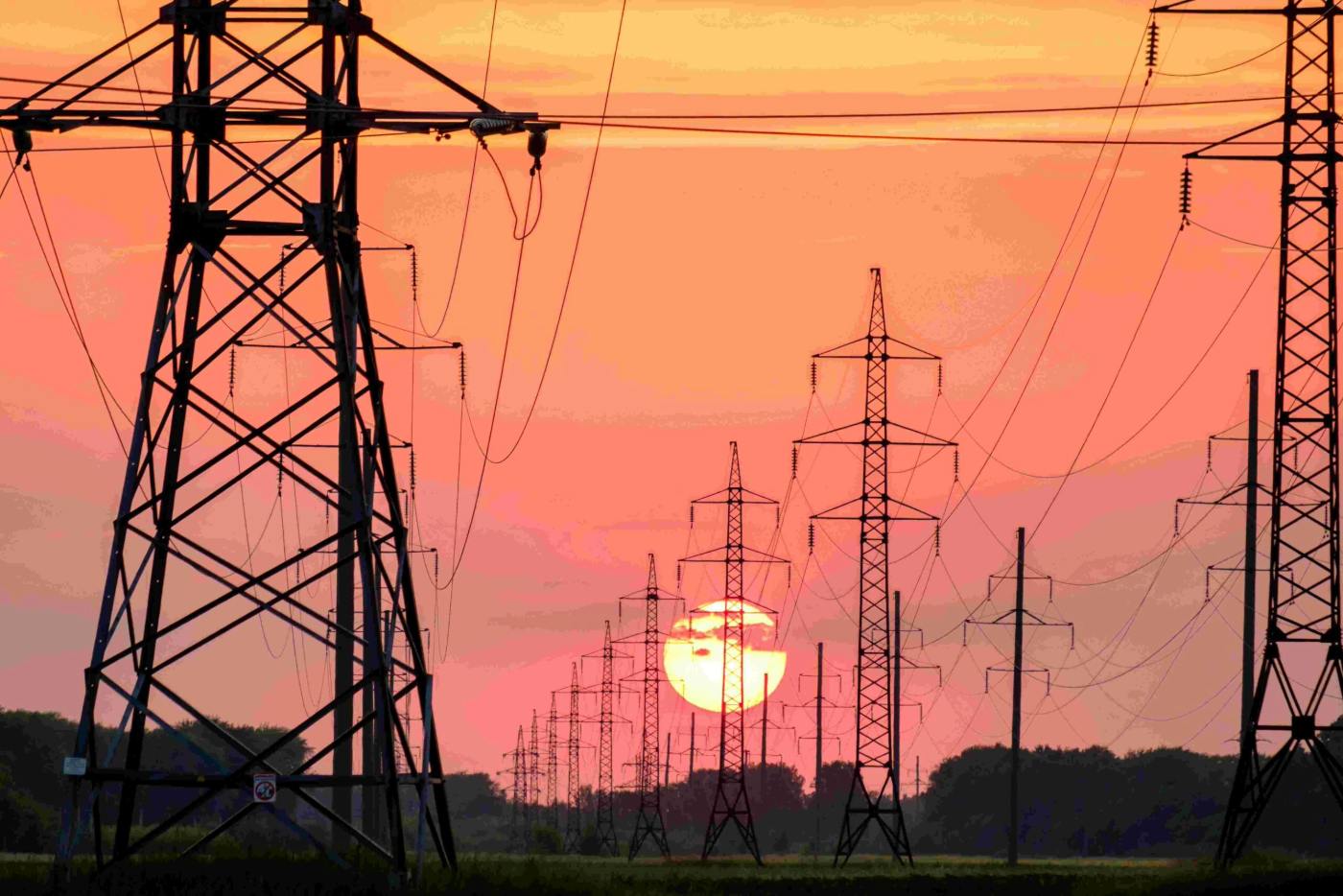
Staying committed on net-zero goals is true test of leadership
Companies have buckled under pressure from the Trump administration and challenging economic conditions, but now's not the time to abandon sustainability goals....
Audio available

by Ann-Christin Andersen , Karl Schmedders Published September 2, 2025 in Sustainability • 9 min read • 
A decade after the Paris Agreement, the consensus on climate action is showing signs of strain. The energy transition is underway – investments in renewables are rising, net-zero pledges abound, and sustainability is on the agenda in boardrooms – but the context has changed dramatically. A sharp rise in energy prices due to COVID-19 and war in Ukraine has jolted markets. For many governments, climate ambitions have been tempered by the need for energy security and energy affordability. Corporate leaders need to understand how energy impacts their businesses at the macro (energy markets) and micro levels (energy consumption and usage).
Energy security in Europe was taken for granted for years. Underinvestment in domestic capacity and overreliance on imported fossil fuels, particularly Russian gas, left the region vulnerable. Soaring energy bills made headlines, fueling populist narratives and prompting costly government interventions.
The energy trilemma, an old but powerful concept, encompasses the interlocking goals that must be balanced: environmental sustainability, energy security, and energy affordability. In recent years, the emphasis has tilted toward sustainability, but the center of gravity is shifting. It’s a strategic challenge for business leaders with direct implications for competitiveness, supply chain resilience, and long-term value creation. Navigating the energy trilemma is becoming basic strategic foresight.
More than just an academic framework, the energy trilemma is a reality for governments, industries, and citizens. It describes the competing and often conflicting demands placed on energy systems: achieving environmental goals (sustainability), ensuring uninterrupted access to energy (security), and keeping energy costs manageable (affordability). While aligned in principle, these goals frequently pull in different directions during crises or when technologies underperform. Ideally, all three dimensions should balance, but progress on one front often comes at the expense of another: a rapid decarbonization drive may create volatility or raise prices; efforts to subsidize fossil fuel consumption may keep prices low but delay clean energy investment; overreliance on a single energy source, even a clean one, can make countries dependent on external suppliers.
Tackling one dimension on its own is impossible. Political cycles, technological breakthroughs, climate disasters, and market disruptions can all shift the balance. Companies that commit to sustainability goals, electrify operations, and invest in clean energy are becoming active participants in the trilemma. Their choices can tilt the balance, and their success depends on recognizing the trade-offs.
The 2015 Paris Agreement marked a rare moment of global alignment. Nearly all nations pledged to reduce greenhouse gas emissions and transition toward a more sustainable energy future. Business responded enthusiastically: ESG investing surged, climate risk disclosures became mainstream, and “Net zero by 2050” entered the corporate lexicon.
That momentum has now faltered. In the US, a political backlash against ESG and climate regulation has gained traction. In Europe, the war in Ukraine forced a temporary return to coal and triggered massive subsidies to cushion energy inflation. In developing economies, climate finance pledges remain unmet, leaving governments torn between clean energy ambitions and immediate development needs.
Geopolitically, the shift has been even more dramatic. Energy has emerged once more as a strategic asset. The US Inflation Reduction Act (IRA) channeled hundreds of billions of dollars into domestic clean energy, triggering concerns over green protectionism. China dominates global solar and battery supply chains, even as it continues to produce coal-fired power to ensure economic stability. In the EU, the REPowerEU strategy seeks to accelerate renewables and end dependence on Russian fuels. In practice, it has reinforced national-level energy strategies, notably through bilateral gas deals, domestic subsidies, and fast-tracked local infrastructure.
The result is strategic fragmentation. Where once there was a sense of global coordination, today we see overlapping national priorities and competing industrial strategies. Supply chains are being redrawn, and energy alliances are shifting. These geopolitical shifts make the trilemma more localized and unpredictable for firms with international operations.
In this fractured landscape, companies can no longer assume energy will flow smoothly across borders, nor can they take policy stability for granted. Energy resilience and geopolitical literacy are fast becoming core business capabilities.
For all the optimism around renewables, the energy transition comes with physical constraints, especially in infrastructure. Unlike fossil fuels, which can be stored in tanks, shipped globally, and priced through global markets, electricity is more like a local product. Electrons must travel through wires, and due to limitations in storage, electricity is produced, sold, and transported on demand.
Solar and wind production is intermittent, making the renewable energy system more complex and creating extra volatility if not carefully managed. Grid bottlenecks are a further obstacle to decarbonization. In many regions, connecting new solar or wind projects to the grid takes years, with permit delays, local opposition, and outdated infrastructure slowing progress.
This mismatch between ambition and physical capability creates new risks for businesses. A firm may want to decarbonize operations but discovers that the local energy system cannot reliably support electrification. Alternatively, it may invest in on-site renewables, only to face curtailment or regulatory barriers. These are not theoretical issues; they’re already happening in parts of Europe, the US, and Asia.
The contrast with fossil fuels is stark. Molecules like coal, oil, and gas can be traded, stored, and rerouted. They offer flexibility in a crisis, whereas electrons do not. Companies must prepare for a new kind of exposure as they lean in to electrification: how dependent they are on the energy system.

“Solar and wind production is intermittent, making the renewable energy system more complex and creating extra volatility if not carefully managed.”
The energy trilemma is a strategic lens to assess your firm’s resilience and agility. Boards and executives should regularly ask themselves the following:
For years, decarbonization was treated as a cost or a reputational risk, but now, clean, reliable, and cost-effective energy is becoming a competitive differentiator. Leading firms are building resilience into their operations by embedding energy strategies into their core business planning.
Some secure long-term renewable power purchase agreements to lock in costs and reduce their volatility, while others invest in on-site generation or battery storage. A few are rethinking geographic footprints entirely and locating operations in regions with abundant clean energy and political stability. This is especially visible in semiconductors, manufacturing, and heavy industry sectors.
These moves can create value, but there is no one-size-fits-all playbook. Firms that solve the trilemma more effectively than others can enjoy more stable margins, faster regulatory approvals, and stronger brand equity. This type of energy management is becoming a signal of strategic maturity in finance, supply chains, and consumer goods.
The energy trilemma is an evolving challenge that reflects the shifting priorities of governments, markets, and societies. There may be moments when sustainability leads the way, when climate targets, innovation, and investor momentum align. At other times, energy affordability or energy security may come first, often driven by crisis or political factors.
In this context, the real test of leadership is not perfection but finding a sound balance. Business leaders must recognize that energy is now central to competitiveness, resilience, and value creation. They must build “trilemma literacy” into corporate decision-making, board-level discussions, and scenario planning. This means tracking energy exposure as carefully as financial risk and understanding infrastructure and regulatory timelines as thoroughly as market demand.
The companies that best manage the tensions between sustainability, security, and affordability will do far more than just survive. They will build stakeholder trust, attract capital, retain talent, and gain strategic flexibility. In a world of fractured geopolitics and growing volatility, the trilemma is a compass, not to eliminate risk but to lead through it – boldly, pragmatically, and with eyes open.

BASF, the world’s largest chemical producer, announced in 2022 that it would significantly downscale its European operations due to the cost of energy. The German firm’s margins had collapsed as Russian pipeline flows stopped and gas prices soared. The company decided to shift investment and production toward China and the US, where energy prices were lower and supply more secure. The case illustrates how energy security and energy affordability can overpower sustainability commitments in the face of shocks. In addition, it highlights how energy price volatility can become a deindustrializing force, raising broader questions about Europe’s ability to lead the clean transition while maintaining competitiveness unless access to affordable energy is secured.
Apple has made ambitious climate commitments, including a pledge to achieve carbon neutrality across its supply chain by 2030. This cascaded down to suppliers, especially in Asia, where many are now under pressure to decarbonize operations, often without the resources or infrastructure to do so. Sustainability is the driving force, led by brand, investor, and consumer expectations. But for many suppliers, especially in countries where grid emissions remain high and capital is expensive, the move to clean energy can strain energy affordability and even energy reliability. Apple responded by helping some suppliers secure long-term renewable power purchase agreements and offering support for energy audits. This case shows how multinationals must engage deeply with energy realities in different geographies because, otherwise, decarbonization risks becoming a top-down mandate with limited traction.
Ireland has become a significant hub for data centers, attracting major investments from tech giants like Amazon, Microsoft, and Google. In 2023, data centers consumed over 21% of the nation’s metered electricity, up from 5% in 2015. This surge has outpaced the electricity consumption of all urban households combined, which stood at 18% in the same year. The concentration of data centers, particularly in the Dublin area, has strained the local electricity grid. In response, EirGrid, Ireland’s state-owned grid operator, imposed a de facto moratorium in 2021 on new data center connections in the Dublin region, with the restriction expected to last until 2028. Here, the economic benefits and digital growth driven by data centers are at odds with the challenges of ensuring a secure and sustainable energy supply. It underscores the necessity for infrastructure planning and energy policy to keep pace with technological and industrial developments.

Ann-Christin Andersen is an executive with 35 years of experience in the energy industry. She has held executive and senior management positions at Shell, ABB, Kongsberg Ground, and FMC Technologies. Today, Andersen is CEO of Norwegian Energy Partners. She combines her executive role with strategic advisory through her start-up 4ADA and non-executive board work in the UK, Denmark, and Norway. She holds a bachelor’s degree with 1st Class Honors in Offshore Electrical Engineering from Heriot-Watt University, UK, and an Executive MBA with Honors from IMD.

Professor of Finance at IMD
Karl Schmedders is a Professor of Finance, with research and teaching centered on sustainability and the economics of climate change. He is Director of IMD’s online certification course for structured investment and also teaches in the Executive MBA programs and serves as an advisor for International Consulting Projects within the MBA program. Passionate about sustainable finance, Schmedders believes that more attention needs to be paid to on the social (S) and governance (G) aspects of ESG to ensure a fair transition and tackle inequality.

November 27, 2025 • by Amanda Williams in Energy
Companies have buckled under pressure from the Trump administration and challenging economic conditions, but now's not the time to abandon sustainability goals....
 Audio available
Audio available
November 11, 2025 • by Roberto Bocca in Energy
Brazil, India, and Nigeria, among others, present opportunities and challenges for business in a rapidly developing energy landscape. Companies should tailor their approaches to tap into growth markets....
 Audio available
Audio available
November 5, 2025 • by Jad Mouawad, José Parra Moyano in Energy
AI is power hungry but, used wisely, its benefits could outweigh the costs. Business leaders will play a key role in determining whether innovation and sustainability can advance together....
 Audio available
Audio available
October 28, 2025 • by Clara Camarasa in Energy
Doing more with less energy is the fastest and cheapest way to cut emissions. Business leaders must do more to translate words into action....
 Audio available
Audio availableExplore first person business intelligence from top minds curated for a global executive audience